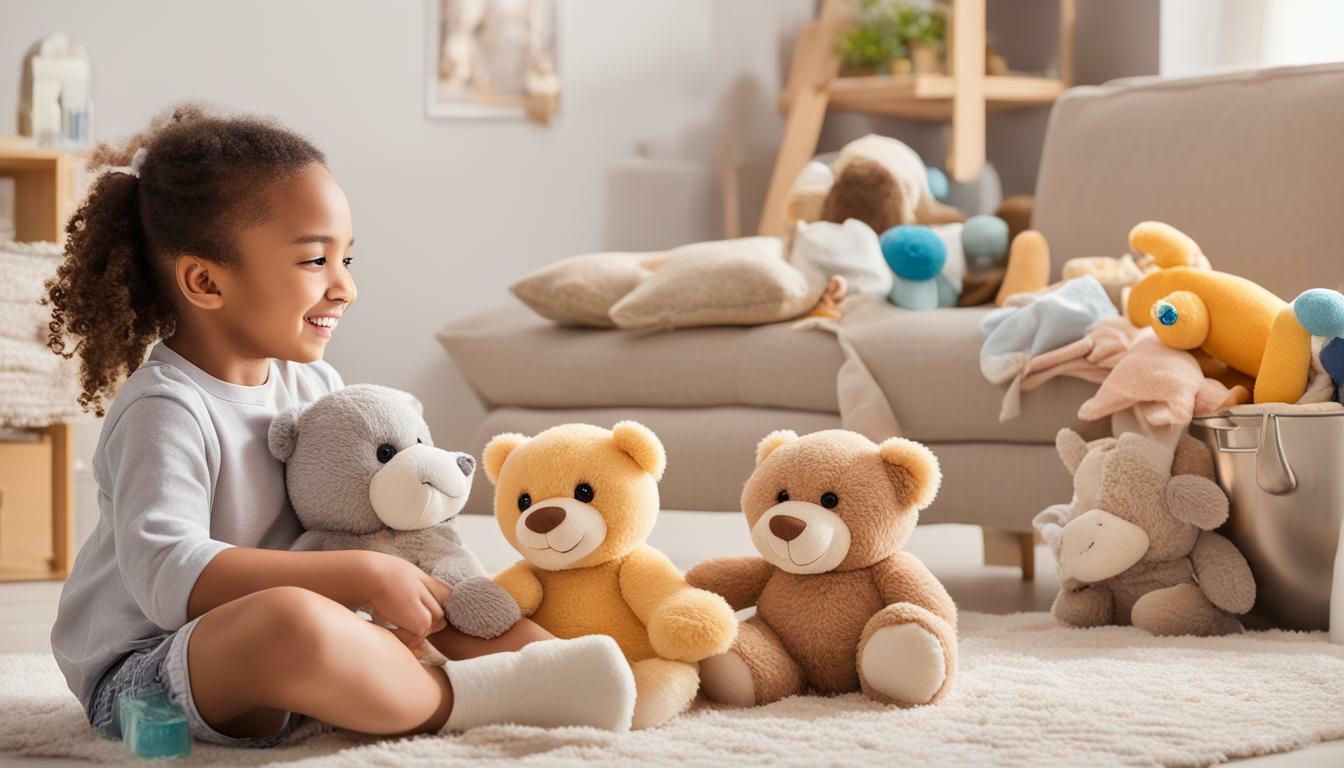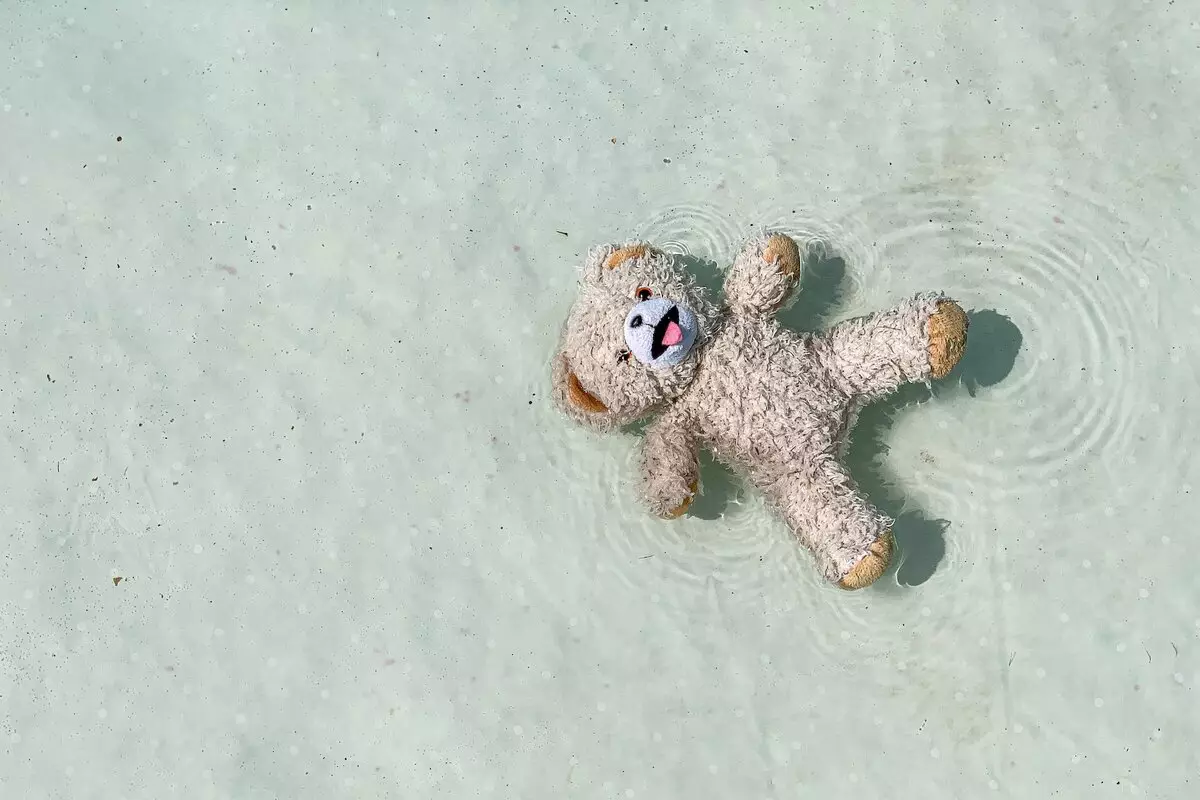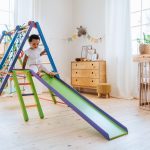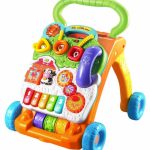I. Introduction
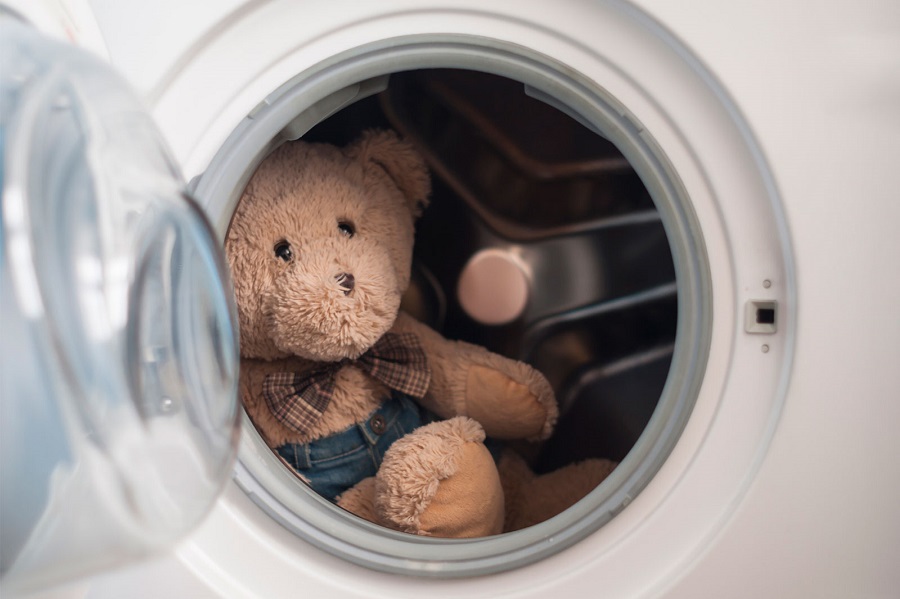
A. The importance of cleaning baby toys regularly
Regular cleaning of baby toys is crucial for maintaining their safety and hygiene. Babies have developing immune systems and are prone to putting toys in their mouths, making it vital to keep their toys clean and free from harmful bacteria, dirt, and germs. Regular cleaning also helps prolong the lifespan of the toys, ensuring they can be enjoyed for a longer time.
B. Ensuring the safety and hygiene of baby toys
Clean baby toys provide a safe and healthy environment for babies to play and explore. Regular cleaning helps prevent the spread of germs and reduces the risk of infections or illnesses. It also eliminates potential allergens and irritants that may cause discomfort or allergic reactions in babies.
II. Identifying Cleaning Needs for Baby Toys
A. Understanding the different materials and types of baby toys
Baby toys come in various materials such as hard plastic, soft fabric, wood, and natural fibers. Each material requires specific cleaning methods to ensure effective and safe cleaning. Understanding the materials helps in selecting the appropriate cleaning techniques and products.
B. Identifying specific stains, dirt, or potential hazards on baby toys
Regular inspection of baby toys helps identify specific cleaning needs. Stains, dirt, and potential hazards such as loose parts, sharp edges, or broken pieces should be identified and addressed promptly. This ensures that cleaning efforts target the necessary areas and that the toys are safe for babies to play with.
III. Cleaning Methods for Different Types of Baby Toys
A. Surface Cleaning for Hard Plastic Toys
- Preparing the toys for surface cleaning
- Remove any detachable parts or batteries.
- Check for any cracks or loose pieces that may require repair or replacement.
- Using warm soapy water and a clean cloth to wipe the toys
- Fill a basin or sink with warm water and mild baby soap.
- Dip a clean cloth into the soapy water and gently wipe the surfaces of the toys.
- Pay extra attention to any crevices or grooves where dirt and grime may accumulate.
- Rinse and air-dry the toys thoroughly
- Rinse the toys with clean water to remove any soap residue.
- Allow the toys to air-dry completely before returning them to your baby’s play area.
- Ensure that the toys are completely dry to prevent any moisture buildup that can lead to mold or mildew growth.
B. Washing Soft Fabric Toys
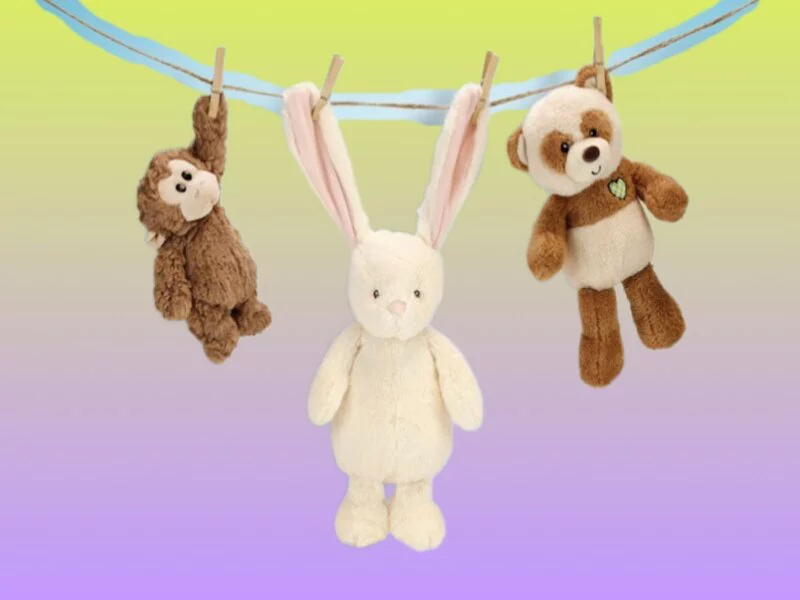
- Checking for manufacturer’s instructions or care labels
- Before washing any soft fabric toys, check for any specific cleaning instructions or care labels provided by the manufacturer.
- Follow the recommended cleaning method to ensure the toy’s durability and safety.
- Machine washing, using a gentle cycle and mild detergent
- Place the soft fabric toys in a mesh laundry bag to protect them during the wash.
- Select a gentle cycle and use a mild baby detergent to prevent any skin irritations.
- Wash the toys with like-colored items to prevent color bleeding.
- Air drying or using low heat in the dryer with caution
- After washing, remove the toys from the mesh bag and gently reshape them if necessary.
- Air-dry the toys by laying them flat or hanging them in a well-ventilated area.
- If using a dryer, select a low heat setting or delicate cycle to avoid damaging the fabric.
C. Cleaning Bath Toys
- Inspecting bath toys for mold or mildew buildup
- Regularly inspect bath toys for any signs of mold or mildew growth.
- Discard any toys with significant mold, as they may pose a health risk to your baby.
- Soaking bath toys in a mixture of water and vinegar
- Create a solution of equal parts water and white vinegar in a basin or sink.
- Submerge the bath toys in the vinegar solution and let them soak for about 10 to 15 minutes.
- Agitate the toys in the solution to loosen any debris, dirt, or soap residue.
- Scrubbing and rinsing the bath toys thoroughly
- Use a clean cloth or soft brush to scrub the bath toys, paying attention to hard-to-reach areas.
- Rinse the toys thoroughly with clean water to remove any vinegar residue.
- Squeeze out excess water and air-dry the toys completely before storing.
D. Sanitizing Pacifiers and Teething Toys
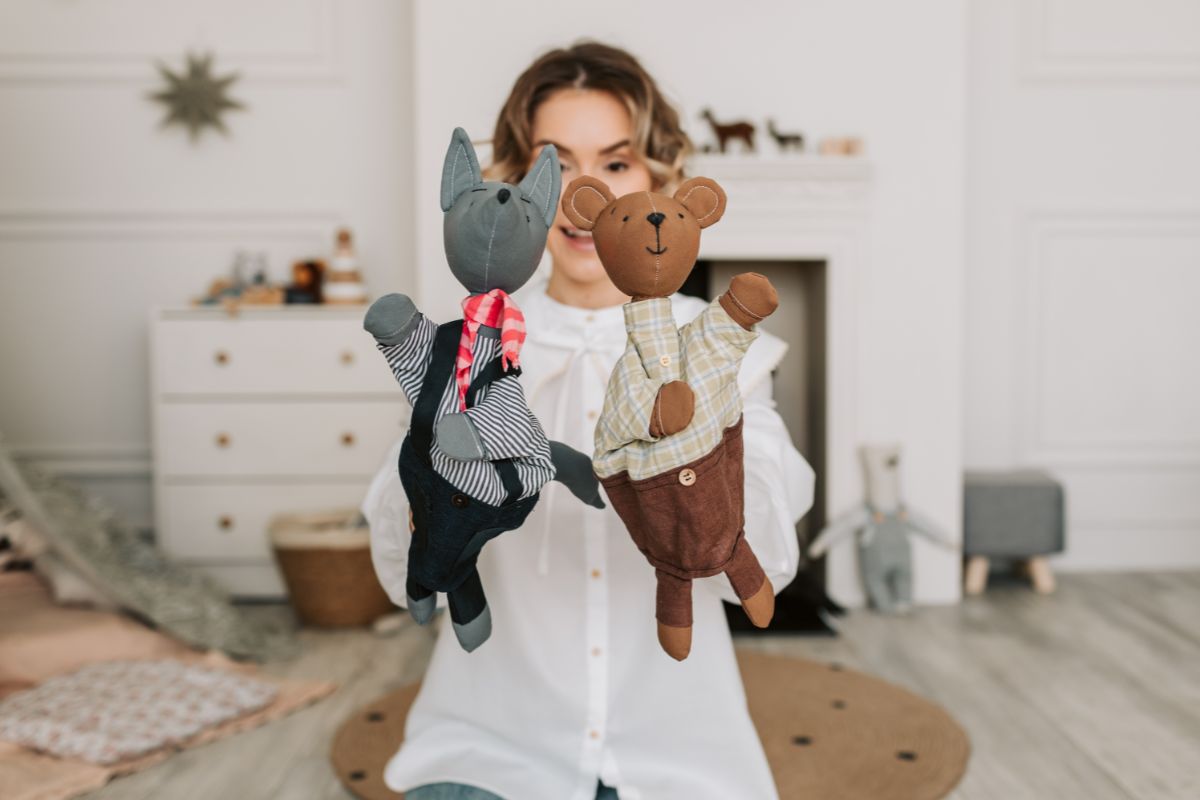
- Boiling pacifiers and teething toys in water for a few minutes
- Place the pacifiers and teething toys in a pot of boiling water.
- Boil them for a few minutes to kill any bacteria or germs.
- Ensure that the toys are suitable for boiling and won’t get damaged by the heat.
- Using a baby-safe sanitizing solution or wipes
- If boiling is not an option, use a baby-safe sanitizing solution or wipes specifically designed for pacifiers and teething toys.
- Follow the product instructions for proper use and duration.
- Air drying or drying with a clean towel
- After sanitizing, let the pacifiers and teething toys air-dry completely.
- Alternatively, pat them dry with a clean towel before allowing them to air-dry.
IV. Cleaning Methods for Wooden and Natural Fiber Toys
A. Surface Cleaning Wooden Toys
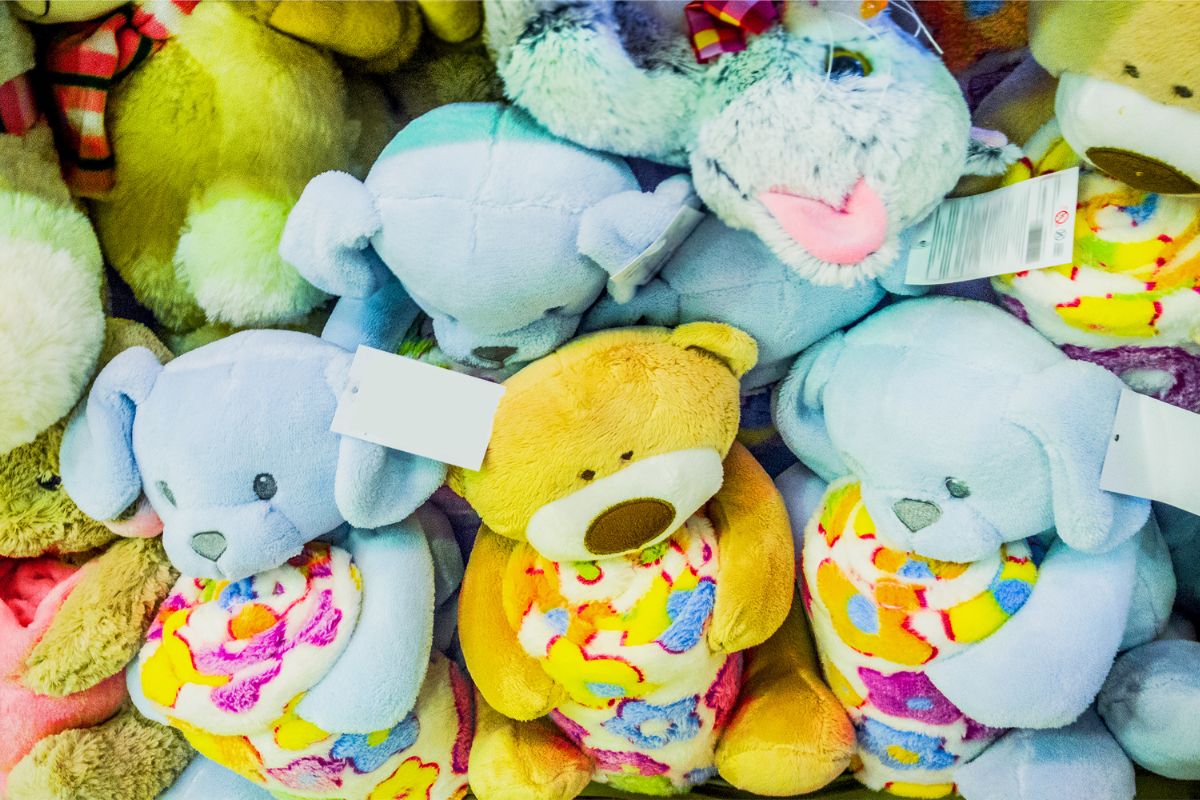
- Using a mild soapy solution and a cloth to wipe wooden toys a. Prepare a solution of mild dish soap or baby-safe wood cleaner and warm water. b. Dip a clean cloth or sponge into the soapy solution, ensuring it is not excessively wet. c. Gently wipe the surface of the wooden toys with the damp cloth, removing any dirt, smudges, or residue. d. Pay special attention to any intricate details or crevices.
- Gentle scrubbing for stubborn stains or dirt a. For stubborn stains or dirt, use a soft-bristled brush or toothbrush and the mild soapy solution. b. Dip the brush into the solution and scrub the affected areas gently, applying light pressure. c. Avoid using excessive force or harsh abrasives that may damage the wood or its finish.
- Air drying thoroughly a. After cleaning, wipe any excess moisture from the wooden toys with a clean, dry cloth. b. Place the toys on a clean towel or drying rack in a well-ventilated area to air dry completely. c. Ensure that the toys are completely dry before returning them to your child’s play area or storing them. Moisture can lead to mold or warping of the wood.
B. Cleaning Natural Fiber Toys
- Spot treating stains with a mild detergent and water mixture a. Identify any stains or soiled areas on natural fiber toys. b. In a small bowl, mix a mild detergent or baby-specific stain remover with water to create a solution. c. Dip a clean cloth or sponge into the solution and gently blot or dab the stained area. d. Work from the outside of the stain towards the center to prevent spreading.
- Hand washing with care and gentle agitation a. Fill a basin or sink with lukewarm water and a small amount of mild detergent or baby-safe soap. b. Submerge the natural fiber toys in the soapy water and agitate them gently by swirling, squeezing, or squeezing them. c. Pay attention to any particularly dirty or stained areas and give them extra attention. d. Avoid excessively scrubbing or twisting the toys, as it may damage the fibers.
In conclusion, cleaning wooden and natural fiber toys requires special care to ensure their longevity and safety. Surface cleaning wooden toys with a mild soapy solution, gentle scrubbing for stubborn stains, and allowing them to air dry thoroughly are effective methods. Spot treating stains on natural fiber toys with a mild detergent mixture, hand washing with care and gentle agitation, and air drying in a well-ventilated area can help maintain their cleanliness. It’s essential to avoid excessive moisture, harsh detergents, or abrasive cleaning methods that may damage these delicate materials. By following these cleaning methods, parents can ensure that their child’s wooden and natural fiber toys remain clean, safe, and in good condition for continued play and enjoyment.
